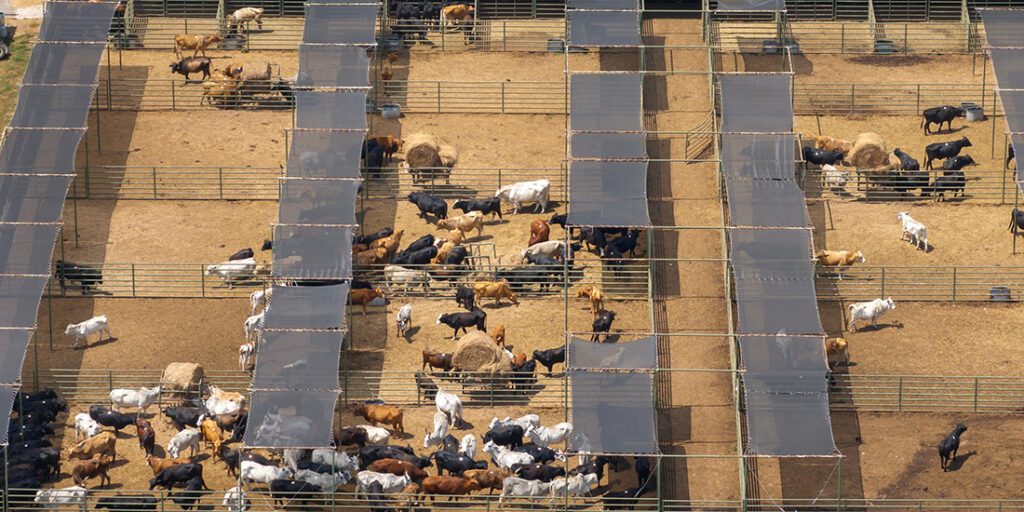AGRICULTURE & FOOD DEFENSE

Managing Animal Loss: Emergency Carcass Operations
- Joshua Dise and Marshal Wilson
Carcass management is rarely top of mind for emergency managers, but during mass animal deaths, it tests preparedness, coordination, and public trust. Including it in all-hazards planning closes a critical gap and boosts community resilience.
Most Recent

AI Software in 911 Dispatch Centers: An Innovative Solution
Tanya M. Scherr
April 2, 2025
Coupled with continued staffing challenges, mental health and work-life balance difficulties in emergency call centers are cause for concern. By allowing artificial intelligence (AI) to take some of the burden off from existing staff and leadership, focus can be returned to where it is most needed within each center.

Agriculture Security: Systems-Based Preparedness
Joshua Dise and Adrian Self
March 26, 2025
As economies and populations grow, the food and agricultural security is of increasing concern. This demands proactive investment in risk management and security measures to ensure the sustainability of the global food supply.

Farm to Power: New Hazards in Rural Communities
Russ Kane
March 26, 2025
In the interest of reducing methane pollution and establishing a revenue stream for a renewable resource, dairy and livestock operators are creating mechanisms to produce compressed natural gas. This new technology reduces greenhouse gases but also introduces new hazards to rural communities.

Agricultural Supply Chain Vulnerability: A Freight Rail Disruption Case Study
Michael Sharon and Randy Treadwell
March 19, 2025
The agricultural supply chain’s global interdependency introduces considerable vulnerability. The failure or weakening of even one of the supply chain links has cascading effects. Awareness of potential catastrophe across sectors is crucial to emergency preparedness.
AGRICULTURE & FOOD DEFENSE ARCHIVES
Back to the Basics: Navigating Crisis Leadership
Andrew Pence
February 19, 2025
From historic catastrophes to today’s challenges, crises pose significant public threats. By returning to the basics and prioritizing deliberate preparation, organizational leaders can build greater
Imagining the U.S. Without Power: A Dual-World EMP Exercise
Charles (Chuck) L. Manto, K. Luke Reiner and Dave Hunt
February 12, 2025
A dual-world tabletop exercise simulating an electromagnetic pulse event in Chicopee, Massachusetts, revealed startling discrepancies in outcomes between the city’s current preparedness and a moderate-preparedness
Lessons in Social Media: Preparing Kids and Community Leaders for Disasters
Patricia Frost and Michael Prasad
August 7, 2024
Addressing children’s needs during a crisis can be challenging. Leveraging social media to create crisis communication campaigns can be an effective way to boost community
The Key Bridge Collapse – Through the Lens of Community Lifelines
Michael Prasad
July 17, 2024
The eight major elements of Community Lifelines use traffic-light-type color-coding to categorize the adverse impact status of a disaster. The article’s author has applied this
Protecting Infrastructure – Cyber, Physical, and EMP Attacks
David Winks
February 21, 2024
Imagine 3,500 spiders, each with their own style, getting together to create a giant web. That’s how this author describes the U.S. power grid and
National Preparedness Efforts Among Tribal Communities
Lynda Zambrano and Catherine L. Feinman
October 9, 2023
Participants at the National Tribal Emergency Management Council’s annual conference in August shared some key takeaways for tribal and nontribal communities to improve their disaster
Follow Us
Get Instant Access
Subscribe today to Domestic Preparedness and get real-world insights for safer communities.
AGRICULTURE & FOOD DEFENSE
Most Recent

Agroterrorism: A Persistent but Overlooked Threat
Dan Scherr and Tanya M. Scherr
March 19, 2025
Agroterrorism is not new. Considered a subset of bioterrorism, it has become an increasing concern to the U.S. With so

The Societal and Economic Dangers of Agroterrorism
Michael (Mike) Nicholls
March 12, 2025
While Ireland’s potato blight was destructive to the Irish population, modern agroterror attacks could be designed to hurt a nation’s

Beyond the Showcase: Strengthening Biosecurity at Livestock Exhibitions
Joshua Dise
March 5, 2025
Hazards and risks associated with state and local fairs mirror those of other high-attendance events—medical emergencies, mass casualty incidents, and

Elevating Healthcare Emergency Preparedness Exercises with Realistic Patient Simulation
Kathryn Romanchuk and Ben Kobliner
February 19, 2025
Overlooked until disaster strikes, many emergency management departments struggle with personnel and budgetary constraints, yet the demand placed on these
AGRICULTURE & FOOD DEFENSE Archives
Managing Animal Loss: Emergency Carcass Operations
Joshua Dise and Marshal Wilson
June 11, 2025
Carcass management is rarely top of mind for emergency managers, but during mass animal deaths, it tests preparedness, coordination, and public trust. Including it in
Why Emergency Management Is a Good Career for Transitioning Veterans
Mathew Perrill
June 11, 2025
For many service members, the transition from the military to a civilian workforce can be challenging. They have been trained in a specialized skill set
AI Software in 911 Dispatch Centers: An Innovative Solution
Tanya M. Scherr
April 2, 2025
Coupled with continued staffing challenges, mental health and work-life balance difficulties in emergency call centers are cause for concern. By allowing artificial intelligence (AI) to
Agriculture Security: Systems-Based Preparedness
Joshua Dise and Adrian Self
March 26, 2025
As economies and populations grow, the food and agricultural security is of increasing concern. This demands proactive investment in risk management and security measures to
Farm to Power: New Hazards in Rural Communities
Russ Kane
March 26, 2025
In the interest of reducing methane pollution and establishing a revenue stream for a renewable resource, dairy and livestock operators are creating mechanisms to produce
Agricultural Supply Chain Vulnerability: A Freight Rail Disruption Case Study
Michael Sharon and Randy Treadwell
March 19, 2025
The agricultural supply chain’s global interdependency introduces considerable vulnerability. The failure or weakening of even one of the supply chain links has cascading effects. Awareness
Follow Us
Get Instant Access
Subscribe today to Domestic Preparedness and get real-world insights for safer communities.




